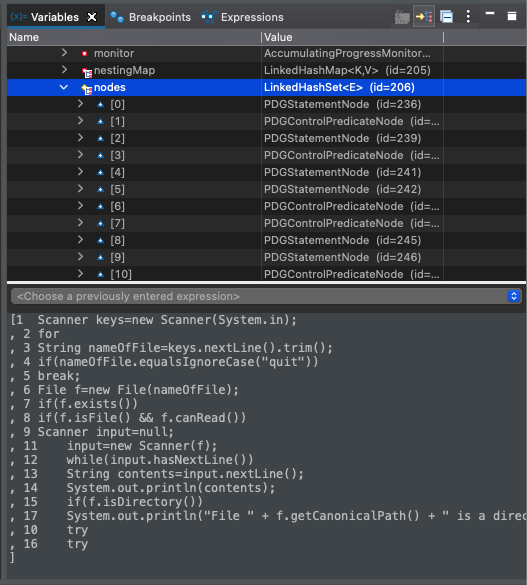@palashborhanuddin
JDeodorant models the entire try-catch structure as a single PDG Control Predicate node.
For the sake of Groum generation, we don't care so much about how exactly the exception handling is done (in other words, what exactly happens inside the catch blocks). We mainly care about what exception types are handled.
So, we can model try-catch as a single node in the Groum representation, and keep as metadata information the exception types handled in the catch blocks.
PDG generated using JDeodorant,
Question, why there is no PDG Node for the statements inside catch and finally blocks?